#Remove Microplastics
Explore tagged Tumblr posts
Text
youtube
#oh i NEEDED that 😭#94% removal rate of microplastics in water..........#good news#hopecore#solarpunk#videos#youtube#Youtube
6 notes
·
View notes
Text
#Hydrogel technology#Microplastic removal#Water purification#IISc innovation#Pollution control#Clean water tech#Water treatment#IISc hydrogel#Microplastics filter
1 note
·
View note
Text







Source: EnGadget
youtube
VERO: Vacuum-cleaner-Equipped Quadruped RObot for Efficient Litter Removal
18 July 2024
IIT' Dynamic Legged Systems lab developed VERO (Vacuum-cleaner Equipped RObot) that can assist people to clean beaches, small alleys and parks, particularly for removing cigarette butts, in terrains that are hard to reach for wheeled and tracked robots.
The onboard vacuum cleaner is connected with hoses to the four legs.
Vacuum cleaner nozzles are attached to each foot, allowing the robot to collect the cigarettes efficiently while walking, by simply stepping close to the detected object and activating the vacuum.
#VERO#Italian Institute of Technology#vacuum equipped quadruped robot#A.I#Youtube#Dynamic Legged Systems Lab#onboard vacuum cleaner#cigarette butts#litter removal#trash#beaches#field robotics#robotics#toxic chemicals#microplastics
2 notes
·
View notes
Text
Also digging holes can mitigate the results of the climate change but will not stop it. Sorry but our ancestors never had to deal with rapidly rising CO2 levels, we had to fix this stuff on our own.
I am once again thinking about digging holes

It's so fucked up that digging a bunch of holes works so well at reversing desertification

I hate that so much discourse into fighting climate change is talking about bioenginerring a special kind of seaweed that removes microplastics or whatever other venture-capital-viable startup idea when we have known for forever about shit like digging crescent shaped holes to catch rainwater and turning barren land hospitable
88K notes
·
View notes
Text
"The substances behind the slimy strings from okra and the gel from fenugreek seeds could trap microplastics better than a commonly used synthetic polymer.
Texas researchers proposed in 2022 using these sticky natural polymers to clean up water. Now, they’ve found that okra and/or fenugreek extracts attracted and removed up to 90% of microplastics from ocean water, freshwater, and groundwater.
With funding from the U.S. Department of Energy, Rajani Srinivasan and colleagues at Tarleton State University found that the plant-based polymers from okra, fenugreek, and tamarind stick to microplastics, clumping together and sinking for easy separation from water.
In this next stage of the research, they have optimized the process for okra and fenugreek extracts and tested results in a variety of types of water.
To extract the sticky plant polymers, the team soaked sliced okra pods and blended fenugreek seeds in separate containers of water overnight. Then, researchers removed the dissolved extracts from each solution and dried them into powders.
Analyses published in the American Chemical Society journal showed that the powdered extracts contained polysaccharides, which are natural polymers. Initial tests in pure water spiked with microplastics showed that:
One gram of either powder in a quart (one liter) of water trapped microplastics the most effectively.
Dried okra and fenugreek extracts removed 67% and 93%, respectively, of the plastic in an hour.
A mixture of equal parts okra and fenugreek powder reached maximum removal efficiency (70%) within 30 minutes.
The natural polymers performed significantly better than the synthetic, commercially available polyacrylamide polymer used in wastewater treatment.
Then the researchers tested the plant extracts on real microplastic-polluted water. They collected samples from waterbodies around Texas and brought them to the lab. The plant extract removal efficiency changed depending on the original water source.
Okra worked best in ocean water (80%), fenugreek in groundwater (80-90%), and the 1:1 combination of okra and fenugreek in freshwater (77%).
The researchers hypothesize that the natural polymers had different efficiencies because each water sample had different types, sizes and shapes of microplastics.
Polyacrylamide, which is currently used to remove contaminants during wastewater treatment, has low toxicity, but its precursor acrylamide is considered toxic. Okra and fenugreek extracts could serve as biodegradable and nontoxic alternatives.
“Utilizing these plant-based extracts in water treatment will remove microplastics and other pollutants without introducing additional toxic substances to the treated water,” said Srinivasan in a media release, “thus reducing long-term health risks to the population.”
She had previously studied the use of food-grade plant extracts as non-toxic flocculants to remove textile-based pollutants from wastewater and thought, ‘Why not try microplastics?’"
-via Good News Network, May 10, 2025
#watere#water pollution#microplastics#plastic#plastic pollution#pollution#solarpunk#environment#okra#fenugreek#united states#north america#texas#environmental science#good news#hope
16K notes
·
View notes
Text
New Amway eSpring Water Purifier Effectively Reduces Microplastics & Pharmaceutical Byproducts
Proven to reduce microplastics, the new eSpring Water Purifier is essential for homes in Malaysia, which tops the list of microplastic consumption among 109 countries surveyed. The new eSpring Water Purifier filters 19 pharmaceutical residues (among the 170+ potential contaminants)–to deliver Healthy Water for Healthy Living. Kuala Lumpur, Malaysia, 16 October 2024 – Amway, an…
0 notes
Text
Cerritos High Student’s Project Could be a Solution to Removing Microplastics From the Ocean
ADARSH SENTHILNATHAN, 15, of Cerritos with his invention that could take microplastics out of the earth’s oceans. October 13, 2023 By Laurie Hanson With 24 trillion microplastics polluting the world’s oceans, a 15-year-old Junior from Cerritos High School has developed a viable prototype for extracting them. “Microplastic pollution is a serious problem that everyone is talking about, but no…

View On WordPress
0 notes
Text
But if you eat the okra after it removes the plastic, does it transmit the plastic to you? And does the plastic stay in the okra until it decomposes, at which point it just goes back into the ground?
"The study found that polysaccharides from okra and fenugreek were best for removing microplastics from ocean water, while a combo of okra and tamarind worked best for freshwater. More importantly, plant-based flocculants can be easily implemented in existing water treatment facilities."
#the solution is obviously bacterial#possibly fungal#I'm all for removing microplastic#but we need to be real about wonderplants
9K notes
·
View notes
Text
🌊There’s more than one kind of FAD
One’s a trend, the other’s a device that can harm our ocean. But just like trends can spark positive change, innovation is transforming fishing practices too.
🦈 The FAD we’re talking about is a fish aggregating device—floating rafts made of plastic, netting, and rope that attract tuna in the open ocean. While FADs make tuna easier to catch, they also attract sharks, sea turtles, and other marine life, which often get accidentally caught too.

‼️The harm doesn’t stop there. An estimated 80,000 to 120,000 FADs are deployed every year—and many are later lost or abandoned. These FADs risk becoming ghost gear—harming marine life, breaking down into microplastics, and adding to marine pollution.

✨ The good news? Solutions to FAD-driven pollution are in the works—from biodegradable FADs made from bamboo, cotton, and plant-based materials to satellite and drone tech that are helping track and recover lost FADs.
🔍What are WE doing? The Monterey Bay Aquarium Seafood Watch program considers FAD use when assessing tuna fisheries because they often have a lot of bycatch of other marine life. We also check if fisheries work to prevent, reduce, or remove ghost gear.


📢 What can YOU do? Buy from businesses that share where their seafood comes from and commit to sustainability—they’re more likely to sell green- or yellow-rated seafood. If the tuna is caught with FADs, make sure it’s from the eastern Pacific Ocean. Also, choose canned tuna labeled:
✅ pole-and-line-caught or pole-caught ✅ troll-caught ✅ FAD-free or free school
📷 2 and 3: Ocean Conservancy/The Global Ghost Gear Initiative.
#monterey bay aquarium#seafood watch#say no to FADs#sustainable seafood#plastic free ocean#earth month 2025
784 notes
·
View notes
Text
The substances behind the slimy strings from okra and the gel from fenugreek seeds could trap microplastics better than a commonly used synthetic polymer. Previously, researchers proposed using these sticky natural polymers to clean up water. Now, they report in ACS Omega that okra and/or fenugreek extracts attracted and removed up to 90% of microplastics in ocean water, freshwater and groundwater. Rajani Srinivasan and colleagues have been exploring nontoxic, plant-based approaches to attract and remove contaminants from water. In one set of lab experiments, they found that polymers from okra, fenugreek and tamarind stick to microplastics, clumping together and sinking for easy separation from water.
Continue Reading.
#Science#Environment#Plants#Chemistry#Analytical Chemistry#Polymers#Microplastics#Okra#Fenugreek#Recycling
264 notes
·
View notes
Text
"The substances behind the slimy strings from okra and the gel from fenugreek seeds could trap microplastics better than a commonly used synthetic polymer.
Texas researchers proposed in 2022 using these sticky natural polymers to clean up water. Now, they’ve found that okra and/or fenugreek extracts attracted and removed up to 90% of microplastics from ocean water, freshwater, and groundwater.
With funding from the U.S. Department of Energy, Rajani Srinivasan and colleagues at Tarleton State University found that the plant-based polymers from okra, fenugreek, and tamarind stick to microplastics, clumping together and sinking for easy separation from water.
In this next stage of the research, they have optimized the process for okra and fenugreek extracts and tested results in a variety of types of water.
To extract the sticky plant polymers, the team soaked sliced okra pods and blended fenugreek seeds in separate containers of water overnight. Then, researchers removed the dissolved extracts from each solution and dried them into powders.
Analyses published in the American Chemical Society journal showed that the powdered extracts contained polysaccharides, which are natural polymers. Initial tests in pure water spiked with microplastics showed that:
One gram of either powder in a quart (one liter) of water trapped microplastics the most effectively.
Dried okra and fenugreek extracts removed 67% and 93%, respectively, of the plastic in an hour.
A mixture of equal parts okra and fenugreek powder reached maximum removal efficiency (70%) within 30 minutes.
The natural polymers performed significantly better than the synthetic, commercially available polyacrylamide polymer used in wastewater treatment.
Then the researchers tested the plant extracts on real microplastic-polluted water. They collected samples from waterbodies around Texas and brought them to the lab. The plant extract removal efficiency changed depending on the original water source.
Okra worked best in ocean water (80%), fenugreek in groundwater (80-90%), and the 1:1 combination of okra and fenugreek in freshwater (77%).
The researchers hypothesize that the natural polymers had different efficiencies because each water sample had different types, sizes and shapes of microplastics.
Polyacrylamide, which is currently used to remove contaminants during wastewater treatment, has low toxicity, but its precursor acrylamide is considered toxic. Okra and fenugreek extracts could serve as biodegradable and nontoxic alternatives.
“Utilizing these plant-based extracts in water treatment will remove microplastics and other pollutants without introducing additional toxic substances to the treated water,” said Srinivasan in a media release, “thus reducing long-term health risks to the population.”
She had previously studied the use of food-grade plant extracts as non-toxic flocculants to remove textile-based pollutants from wastewater and thought, ‘Why not try microplastics?’"
-via Good News Network, May 10, 2025
#microplastics#plastic#plastic pollution#okra#fenugreek#biotechnology#solarpunk#water pollution#pollution#united states#north america#texas#good news#hope
210 notes
·
View notes
Note
Did you know that gum base (for chewing gum) is a mystery and is basically just plastic, I thought it was from a tree! It's not anymore ! It's plastic from petroleum and doesn't biodegrade! It's just a macro plastic which fills your saliva with microplastics!
I love that you came to me with this! I feel like I’ve received a dispatch from a courier! Thank you!
I did not know that and had not thought about it, although I’m not hugely worried about things like plastics or polymers just because they’re not plant-based. There are plenty of not-plant-based plastics and polymers that are fairly inert, and it isn’t worth worrying about all of them; for example, food-grade paraffin wax is a petroleum product, and it’s kind of an “eh” material. Like, we could get crunchier and worry about it, but there’s other things to worry about first.
Ditto plastic: sure, it doesn’t sound tasty, exactly, but pretty much every piece of food we buy and eat in the Anglosphere has been transported and wrapped in inert plastic; has been for forty years; it isn’t like it’s lead-lined tin cans. Er.
Finally, I’d caution making too many conclusions from the findings, which are what appear to be a pilot study presented at a conference. Brilliant, and it looks well-designed, but it doesn’t appear to be published yet. I don’t personally feel qualified to assess the methodology at this distance of removal and without peer review, although the framework all seems quite respectable-looking from here.
All that being said: OH MY GOD LOL THEY ARE JUST MAKING CHEWING GUM OUT OF WHATEVER, HUH. TRADE SECRET MY ASS.
126 notes
·
View notes
Text
#good news#nature#science#environmentalism#environment#microplastics#plastic#plastic pollution#plastic pollution solutions
1K notes
·
View notes
Text
Apple fucked us on right to repair (again)

Today (September 22), I'm (virtually) presenting at the DIG Festival in Modena, Italy. Tonight, I'll be in person at LA's Book Soup for the launch of Justin C Key's "The World Wasn’t Ready for You." On September 27, I'll be at Chevalier's Books in Los Angeles with Brian Merchant for a joint launch for my new book The Internet Con and his new book, Blood in the Machine.

Right to repair has no cannier, more dedicated adversary than Apple, a company whose most innovative work is dreaming up new ways to sneakily sabotage electronics repair while claiming to be a caring environmental steward, a lie that covers up the mountains of e-waste that Apple dooms our descendants to wade through.
Why does Apple hate repair so much? It's not that they want to poison our water and bodies with microplastics; it's not that they want to hasten the day our coastal cities drown; it's not that they relish the human misery that accompanies every gram of conflict mineral. They aren't sadists. They're merely sociopathically greedy.
Tim Cook laid it out for his investors: when people can repair their devices, they don't buy new ones. When people don't buy new devices, Apple doesn't sell them new devices. It's that's simple:
https://www.inverse.com/article/52189-tim-cook-says-apple-faces-2-key-problems-in-surprising-shareholder-letter
So Apple does everything it can to monopolize repair. Not just because this lets the company gouge you on routine service, but because it lets them decide when your phone is beyond repair, so they can offer you a trade-in, ensuring both that you buy a new device and that the device you buy is another Apple.
There are so many tactics Apple gets to use to sabotage repair. For example, Apple engraves microscopic Apple logos on the subassemblies in its devices. This allows the company to enlist US Customs to seize and destroy refurbished parts that are harvested from dead phones by workers in the Pacific Rim:
https://repair.eu/news/apple-uses-trademark-law-to-strengthen-its-monopoly-on-repair/
Of course, the easiest way to prevent harvested components from entering the parts stream is to destroy as many old devices as possible. That's why Apple's so-called "recycling" program shreds any devices you turn over to them. When you trade in your old iPhone at an Apple Store, it is converted into immortal e-waste (no other major recycling program does this). The logic is straightforward: no parts, no repairs:
https://www.vice.com/en/article/yp73jw/apple-recycling-iphones-macbooks
Shredding parts and cooking up bogus trademark claims is just for starters, though. For Apple, the true anti-repair innovation comes from the most pernicious US tech law: Section 1201 of the Digital Millennium Copyright Act (DMCA).
DMCA 1201 is an "anti-circumvention" law. It bans the distribution of any tool that bypasses "an effective means of access control." That's all very abstract, but here's what it means: if a manufacturer sticks some Digital Rights Management (DRM) in its device, then anything you want to do that involves removing that DRM is now illegal – even if the thing itself is perfectly legal.
When Congress passed this stupid law in 1998, it had a very limited blast radius. Computers were still pretty expensive and DRM use was limited to a few narrow categories. In 1998, DMCA 1201 was mostly used to prevent you from de-regionalizing your DVD player to watch discs that had been released overseas but not in your own country.
But as we warned back then, computers were only going to get smaller and cheaper, and eventually, it would only cost manufacturers pennies to wrap their products – or even subassemblies in their products – in DRM. Congress was putting a gun on the mantelpiece in Act I, and it was bound to go off in Act III.
Welcome to Act III.
Today, it costs about a quarter to add a system-on-a-chip to even the tiniest parts. These SOCs can run DRM. Here's how that DRM works: when you put a new part in a device, the SOC and the device's main controller communicate with one another. They perform a cryptographic protocol: the part says, "Here's my serial number," and then the main controller prompts the user to enter a manufacturer-supplied secret code, and the master controller sends a signed version of this to the part, and the part and the system then recognize each other.
This process has many names, but because it was first used in the automotive sector, it's widely known as VIN-Locking (VIN stands for "vehicle identification number," the unique number given to every car by its manufacturer). VIN-locking is used by automakers to block independent mechanics from repairing your car; even if they use the manufacturer's own parts, the parts and the engine will refuse to work together until the manufacturer's rep keys in the unlock code:
https://pluralistic.net/2023/07/24/rent-to-pwn/#kitt-is-a-demon
VIN locking is everywhere. It's how John Deere stops farmers from fixing their own tractors – something farmers have done literally since tractors were invented:
https://pluralistic.net/2022/05/08/about-those-kill-switched-ukrainian-tractors/
It's in ventilators. Like mobile phones, ventilators are a grotesquely monopolized sector, controlled by a single company Medtronic, whose biggest claim to fame is effecting the world's largest tax inversion in order to manufacture the appearance that it is an Irish company and therefore largely untaxable. Medtronic used the resulting windfall to gobble up most of its competitors.
During lockdown, as hospitals scrambled to keep their desperately needed supply of ventilators running, Medtronic's VIN-locking became a lethal impediment. Med-techs who used donor parts from one ventilator to keep another running – say, transplanting a screen – couldn't get the device to recognize the part because all the world's civilian aircraft were grounded, meaning Medtronic's technicians couldn't swan into their hospitals to type in the unlock code and charge them hundreds of dollars.
The saving grace was an anonymous, former Medtronic repair tech, who built pirate boxes to generate unlock codes, using any housing they could lay hands on to use as a case: guitar pedals, clock radios, etc. This tech shipped these gadgets around the world, observing strict anonymity, because Article 6 of the EUCD also bans circumvention:
https://pluralistic.net/2020/07/10/flintstone-delano-roosevelt/#medtronic-again
Of course, Apple is a huge fan of VIN-locking. In phones, VIN-locking is usually called "serializing" or "parts-pairing," but it's the same thing: a tiny subassembly gets its own microcontroller whose sole purpose is to prevent independent repair technicians from fixing your gadget. Parts-pairing lets Apple block repairs even when the technician uses new, Apple parts – but it also lets Apple block refurb parts and third party parts.
For many years, Apple was the senior partner and leading voice in blocking state Right to Repair bills, which it killed by the dozen, leading a coalition of monopolists, from Wahl (who boobytrap their hair-clippers with springs that cause their heads irreversibly decompose if you try to sharpen them at home) to John Deere (who reinvented tenant farming by making farmers tenants of their tractors, rather than their land).
But Apple's opposition to repair eventually became a problem for the company. It's bad optics, and both Apple customers and Apple employees are volubly displeased with the company's ecocidal conduct. But of course, Apple's management and shareholders hate repair and want to block it as much as possible.
But Apple knows how to Think Differently. It came up with a way to eat its cake and have it, too. The company embarked on a program of visibly support right to repair, while working behind the scenes to sabotage it.
Last year, Apple announced a repair program. It was hilarious. If you wanted to swap your phone's battery, all you had to do was let Apple put a $1200 hold on your credit card, and then wait while the company shipped you 80 pounds' worth of specialized tools, packed in two special Pelican cases:
https://pluralistic.net/2022/05/22/apples-cement-overshoes/
Then, you swapped your battery, but you weren't done! After your battery was installed, you had to conference in an authorized Apple tech who would tell you what code to type into a laptop you tethered to the phone in order to pair it with your phone. Then all you had to do was lug those two 40-pound Pelican cases to a shipping depot and wait for Apple to take the hold off your card (less the $120 in parts and fees).
By contrast, independent repair outfits like iFixit will sell you all the tools you need to do your own battery swap – including the battery! for $32. The whole kit fits in a padded envelope:
https://www.ifixit.com/products/iphone-x-replacement-battery
But while Apple was able to make a showy announcement of its repair program and then hide the malicious compliance inside those giant Pelican cases, sabotaging right to repair legislation is a lot harder.
Not that they didn't try. When New York State passed the first general electronics right-to-repair bill in the country, someone convinced New York Governor Kathy Hochul to neuter it with last-minute modifications:
https://arstechnica.com/gadgets/2022/12/weakened-right-to-repair-bill-is-signed-into-law-by-new-yorks-governor/
But that kind of trick only works once. When California's right to repair bill was introduced, it was clear that it was gonna pass. Rather than get run over by that train, Apple got on board, supporting the legislation, which passed unanimously:
https://www.ifixit.com/News/79902/apples-u-turn-tech-giant-finally-backs-repair-in-california
But Apple got the last laugh. Because while California's bill contains many useful clauses for the independent repair shops that keep your gadgets out of a landfill, it's a state law, and DMCA 1201 is federal. A state law can't simply legalize the conduct federal law prohibits. California's right to repair bill is a banger, but it has a weak spot: parts-pairing, the scourge of repair techs:
https://www.ifixit.com/News/69320/how-parts-pairing-kills-independent-repair
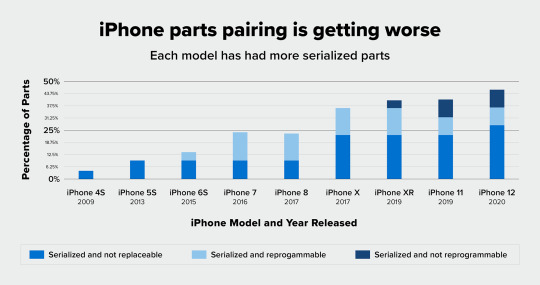
Every generation of Apple devices does more parts-pairing than the previous one, and the current models are so infested with paired parts as to be effectively unrepairable, except by Apple. It's so bad that iFixit has dropped its repairability score for the iPhone 14 from a 7 ("recommend") to a 4 (do not recommend):
https://www.ifixit.com/News/82493/we-are-retroactively-dropping-the-iphones-repairability-score-en
Parts-pairing is bullshit, and Apple are scum for using it, but they're hardly unique. Parts-pairing is at the core of the fuckery of inkjet printer companies, who use it to fence out third-party ink, so they can charge $9,600/gallon for ink that pennies to make:
https://www.eff.org/deeplinks/2020/11/ink-stained-wretches-battle-soul-digital-freedom-taking-place-inside-your-printer
Parts-pairing is also rampant in powered wheelchairs, a heavily monopolized sector whose predatory conduct is jaw-droppingly depraved:
https://uspirgedfund.org/reports/usp/stranded
But if turning phones into e-waste to eke out another billion-dollar stock buyback is indefensible, stranding people with disabilities for months at a time while they await repairs is so obviously wicked that the conscience recoils. That's why it was so great when Colorado passed the nation's first wheelchair right to repair bill last year:
https://www.eff.org/deeplinks/2022/06/when-drm-comes-your-wheelchair
California actually just passed two right to repair bills; the other one was SB-271, which mirrors Colorado's HB22-1031:
https://leginfo.legislature.ca.gov/faces/billNavClient.xhtml?bill_id=202320240SB271
This is big! It's momentum! It's a start!
But it can't be the end. When Bill Clinton signed DMCA 1201 into law 25 years ago, he loaded a gun and put it on the nation's mantlepiece and now it's Act III and we're all getting sprayed with bullets. Everything from ovens to insulin pumps, thermostats to lightbulbs, has used DMCA 1201 to limit repair, modification and improvement.
Congress needs to rid us of this scourge, to let us bring back all the benefits of interoperability. I explain how this all came to be – and what we should do about it – in my new Verso Books title, The Internet Con: How to Seize the Means of Computation.
https://www.versobooks.com/products/3035-the-internet-con


If you'd like an essay-formatted version of this post to read or share, here's a link to it on pluralistic.net, my surveillance-free, ad-free, tracker-free blog:
https://pluralistic.net/2023/09/22/vin-locking/#thought-differently

Image: Mitch Barrie (modified) https://commons.wikimedia.org/wiki/File:Daytona_Skeleton_AR-15_completed_rifle_%2817551907724%29.jpg
CC BY-SA 2.0 https://creativecommons.org/licenses/by-sa/2.0/deed.en
--
kambanji (modified) https://www.flickr.com/photos/kambanji/4135216486/
CC BY 2.0 https://creativecommons.org/licenses/by/2.0/
--
Rawpixel (modified) https://www.rawpixel.com/image/12438797/png-white-background
#pluralistic#vin locking#apple#right to repair#california#ifixit#iphones#sb244#parts pairing#serialization#dmca 1201#felony contempt of business model#ewaste#repairwashing#fuckery
1K notes
·
View notes
Text
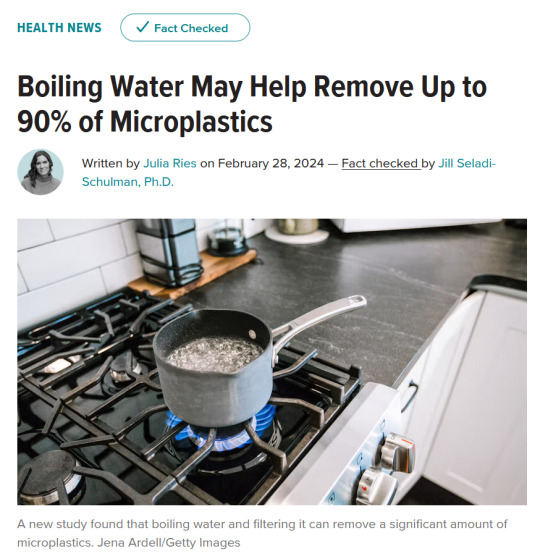
ETA: Article here (can't believe I forgot this rip)
A new study finds you can reduce the amount of microplastics you drink simply by boiling your water.
Scientists are just beginning to understand the health risks associated with microplastic exposure.
Nano- and microplastics are bits of plastic as tiny as one-thousandth of a millimeter in diameter.
Boiling and filtering your tap water may dramatically lower the amount of microplastics you drink, according to new research.
Recent studies have found that nano- and microplastics (NMPs), which are bits of plastic as tiny as one-thousandth of a millimeter in diameter, have been found in a host of products and even in tap water.
A new study, published February 28 in Environmental Science & Technology Letters, found that boiling mineral-rich water for just five minutes can reduce the amount of NMP you’re exposed to by up to 90%.
Scientists are just beginning to understand the health risks associated with microplastic exposureTrusted Source, but growing evidenceTrusted Source suggests the plastics can accumulate in the body and trigger oxidative stress, inflammation, insulin resistance, and liver issues.
Certain advanced water filtration systems can capture and help remove some NMPs from tap water. But researchers wanted to figure out other options to remove microplastics, especially since in poorer countries cheaper, more accessible solutions for clean water are needed.
Boiling water may be a safe, simple solution that can effectively decontaminate household tap water, the new findings suggest.
“Boiling water before drinking is a great example of an ancient cultural practice that can help reduce an environmental exposure,” Dr. Luz Claudio, PhD, a professor of environmental medicine and public health at the Icahn School of Medicine at Mount Sinai, told Healthline.
Claudio was not involved in the study.
How boiling water can help remove microplastics
The researchers found simply boiling water is the first step to removing NMPs from tap water.
The researchers collected multiple samples of tap water from Guangzhou, China and contaminated the samples with varying levels of NMPs.
Each sample was boiled for five minutes then left to cool for 10 minutes.
Boiling hard water that’s rich with minerals — such as calcium or magnesium — creates a chalk-like residue known as limescale, or calcium carbonate (CaCO3), which can trap the plastics.
That solid, chalky residue then had to be separated and removed from the water with a standard coffee filter or stainless steel filter, thereby removing NMPs.
The team found that the impact was greatest in harder water: In samples that had 300 milligrams of CaCO3, for example, nearly 90% of NMPs were removed.
In softer water samples with less than 60 mg of CaCO3, roughly 25% of NMPs were removed.
“What’s important to note here is that the effectiveness of trapping these micro/nano plastics in these mineral solids is tied to how hard the water is – the harder the water, the more solids are formed, the more microplastics are trapped,” Dr. Anja Brandon, PhD, the associate director of U.S. plastics policy at Ocean Conservancy and an environmental engineer, told Healthline.
Brandon was not involved in the study...
How to limit your exposure to microplastics
Anyone who wishes to boil their water should do so in a glass or stainless steel pot.
After boiling the water for about five minutes, let it cool, and do not stir it, Claudio says.
The microplastics need to bind to the calcium and fall to the bottom of the pot so they can filtered or scooped out."
-via Healthline, February 28, 2024
#microplastics#nanoplastics#hard water#calcium carbonate#public health#plastic pollution#good news#hope
3K notes
·
View notes
Text
The Best News of Last Week - August 21, 2023
🌊 - Discover the Ocean's Hidden Gem Deep down in the Pacific
1. Massachusetts passed a millionaire's tax. Now, the revenue is paying for free public school lunches.

Every kid in Massachusetts will get a free lunch, paid for by proceeds from a new state tax on millionaires.
A new 4% tax on the state's wealthiest residents will account for $1 billion of the state's $56 billion fiscal budget for 2024, according to state documents. A portion of those funds will be used to provide all public-school students with free weekday meals, according to State House News Service.
2. Plant-based filter removes up to 99.9% of microplastics from water
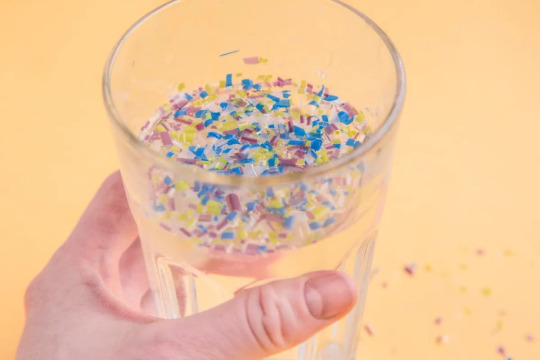
Researchers may have found an effective, green way to remove microplastics from our water using readily available plant materials. Their device was found to capture up to 99.9% of a wide variety of microplastics known to pose a health risk to humans.
3. Scientists Find A Whole New Ecosystem Hiding Beneath Earth's Seafloor
youtube
Most recently, aquanauts on board a vessel from the Schmidt Ocean Institute used an underwater robot to turn over slabs of volcanic crust in the deep, dark Pacific. Underneath the seafloor of this well-studied site, the international team of researchers found veins of subsurface fluids swimming with life that has never been seen before.
It's a whole new world we didn't know existed.
4. How solar has exploded in the US in just a year
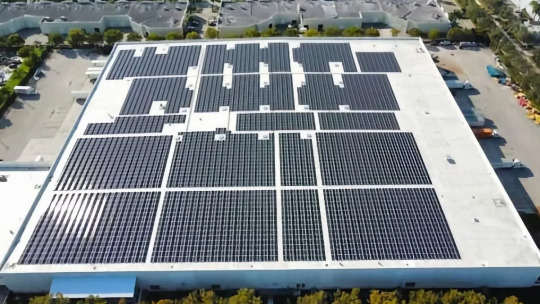
Solar and storage companies have announced over $100 billion in private sector investments in the US since the passage of the Inflation Reduction Act (IRA) a year ago, according to a new analysis released today by the Solar Energy Industries Association (SEIA).
Since President Joe Biden signed the IRA in August 2022, 51 solar factories have been announced or expanded in the US.
5. Researchers have identified a new pack of endangered gray wolves in California

A new pack of gray wolves has shown up in California’s Sierra Nevada, several hundred miles away from any other known population of the endangered species, wildlife officials announced Friday.
It’s a discovery to make researchers howl with delight, given that the native species was hunted to extinction in California in the 1920s. Only in the past decade or so have a few gray wolves wandered back into the state from out-of-state packs.
6. Record-Breaking Cleanup: 25,000 Pounds of Trash Removed from Pacific Garbage Patch
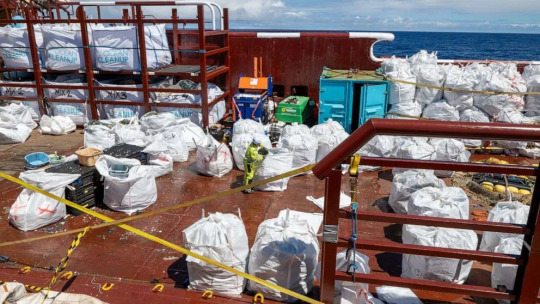
Ocean cleanup crews have fished out the most trash ever taken from one of the largest garbage patches in the world.
The Ocean Cleanup, a nonprofit environmental engineering organization, saw its largest extraction earlier this month by removing about 25,000 pounds of trash from the Great Pacific Garbage Patch, Alex Tobin, head of public relations and media for the organization
7. The Inflation Reduction Act Took U.S. Climate Action Global
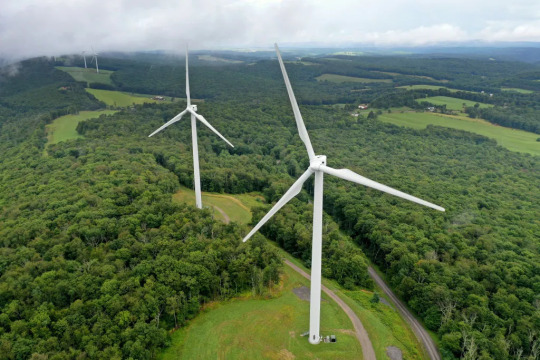
The U.S. Inflation Reduction Act (IRA) aimed to promote clean energy investments in the U.S. and globally. In its first year, the IRA successfully spurred other nations to develop competitive climate plans.
Clean energy projects in 44 U.S. states driven by the IRA have generated over 170,600 jobs and $278 billion in investments, aligning with Paris Agreement goals.
---
That's it for this week :)
This newsletter will always be free. If you liked this post you can support me with a small kofi donation here:
Buy me a coffee ❤️
Also don’t forget to reblog this post with your friends.
1K notes
·
View notes